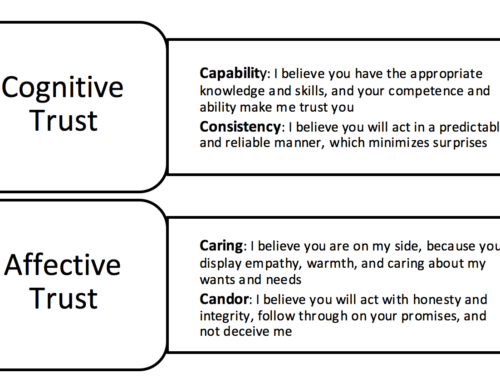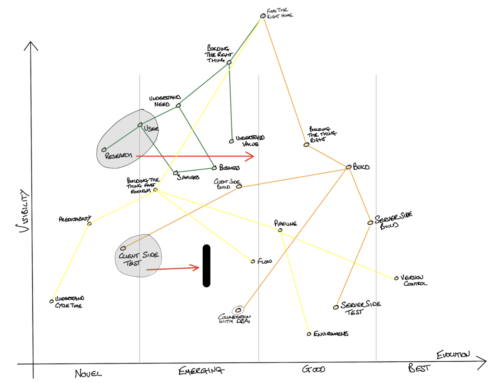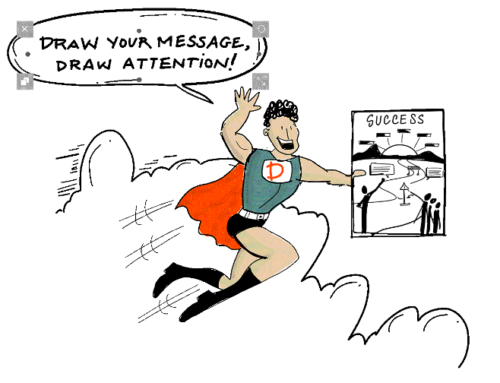This article was published on my previous site in 2016 when studying for an MA in Online & Distance Education. The article mentions OULive – this was the predecessor to Adobe Connect:
Over the last few weeks on the H817 Open University course, we were tasked to develop some activities in virtual study groups in teams of five people. Each activity had the duration of a week and required outputs to be published to our peer group by the close of the week.
In my normal work as a facilitator, coach and trainer, I regularly work in virtual groups / teams, designing and delivering
organisational development interventions across the globe, so I was curious to see how this co-learning experience would develop.
None of our activities hit the due time / date. I envisaged this being the end of one study week, in order to allow work to start
on the next activity the follow week. I do not think we were the only group to finish late. Balancing work, life and distance learning is a tricky thing.
As I reflect on this, here are some things I would do differently next time, if I was running these tasks as part of my work or as part of a study team:
1) Know who is in the team
Ensure participants know which study team they are in ahead of the start date. This allows the group to connect and start
planning. A one-week schedule is tight to coordinate five people as well as design and deliver a report.
2) Know how to contact them
Collect appropriate contact details ahead of time: One blocker to success was the access control on the various collaboration platforms. People need to engage on different platforms together early on to hit the deadlines (wikis, chat apps, document collaboration etc). As these platforms require sign on authentication, people should share these as soon as possible.
3) Align clarity on deliverables
Establish common understanding of deliverable required. Everyone in the team needs to know what the required deliverable in terms of content blocks, format and platform for delivery.
4) Kick off soon together
Create a team meeting as soon as possible. Getting everyone engaged early on would accelerate the project. We were unable to get more than three of the five to chat together via the OULive platform. That was even after using Doodle.com to try and coordinate date/ time of the meeting. This initial meeting could then cover: our shared understanding, roles and responsibilities and deadlines for content delivery and review.
5) Choose appropriate tools
Ensure you have the right tools for collaboration: As a team we stuck to four tools: wiki, VLE (forum), Google docs and OULive. These certain helped, but I am unsure if they were the right toolset. On reflection, I feel a group chat application would have helps improve the communication. My personal choice of tools would have been: hangouts (this allows chat as well as voice / video calls) and the google doc. That would, in my opinion, been enough to deliver the required report.
6) Know your time zones
Check time zones for everyone. Having a understanding of the time zone people are working in, helps coordinate online
time together. It can also help with workflow distribution. In our tutor group we have principally people in UK / Europe so only one hour time difference, but we have people who are +9 hours and -6 hours. This is not a hindrance, but can actually help, if document planning is carried out well.
7) Share availability
Check for availability and know when people are free to work together. In theory, everyone who has signed up for a paid OU
course knows the time commitment required. H817 is around 14 hours a week. This does not mean though that everyone can dedicate that amount of time in a specific week. Work, family, travel and potentially other OU commitments can mean people cannot dedicate the time required. This I personally do not see as a big issue, as long as the whole team are transparent about what time they can dedicate and when they can dedicate it. Not everyone has to dedicate the same amount of time and at the same times. Having people available at different moments in the project delivery time frame can be turned to an advantage.
8) Check in regularly
Distance learning can be quite a lonely affair and getting the group to check in on a realistically relevant timeframe would help engage people and keep the deliverable on track. For our one week project with the start day being a Saturday, I think 3 or 4 check-ins would help. These could be by voice i.e. OULive, but even a chat or VLE check in would do.
9) Engage “laggards”
The nature of distance learning means that people check in with group forums and wikis when it suits them. With projects with
such a short time frame, it would be better to to proactively reach out and get those not engaged involved straight away. A few days delay can push the whole project over the time limit.
10) Reflect on how you are collaborating.
Learn from the experience: With two back-to-back learning projects, we rushed from one to another. No time was taken to review the collaboration process in terms of what went well, what could we have done differently and how should we tackle this second project based on our experience of the first. Reviewing and reflecting is a key part of the learning process and we did not create the time to do it.
So those are my initial thoughts around what happened or did not. It has been a great learning experience. There will be
more opportunities in the module to work virtually as a learning team. Our final TMA is team based and so I think we may need to improve our capability to collaborate by then. These are, pretty much, the same principles I have taught in the past when training managers and leaders to lead virtually. In terms of resources, I have four books on my bookshelf and all are worthy of a read for those keen to improve virtual teaming:
- Virtual Teams Pocketbook by Ian Fleming (Not the James Bondwriter!)
- Where in the world is my team by Terence Blake.
- The handbook of high performance virtual teams edited Nemiro, Beyerlein, Beyerlein and Bradbury
- Virtual Team Success by Derosa and Lepsinger
On a separate note, recently I have been looking at the role of agile principles in organisational transformation and B2B sales, and I wonder if this methodology could also be applied to group learning in distance learning courses. That sounds like another blog piece though!
Curious to get your feedback and reflections on my top ten tips: Did I miss any? How do you ensure, as a learner or educator,that
projects get delivered in a timely manner? Any other reflections or feedback after reading this that you would like to share?
Thanks for reading, Andi






Leave A Comment